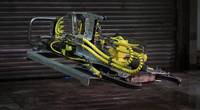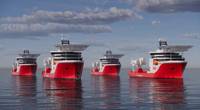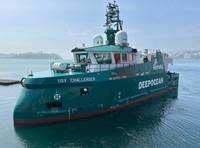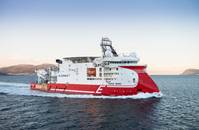
Norwegian shipbuilder Vard has completed the upgrades on Island Offshore’s well intervention vessel Island Wellsaver.The extensive upgrade and maintenance operation project for the Island Wellsaver vessel included the replacement of the remotely operated vehicle (ROV) system…

The Danish Energy Agency (DEA) has extended the production permits for the Nysted and Middelgrunden offshore wind farms, enabling the projects to continue producing electricity for 10 and 25 more years, respectively.These are two of the oldest offshore wind farms in Denmark…

Norwegian offshore vessel operator Solstad Offshore has confirmed contracts for two of its construction support vessels (CSVs), which will be put to work in South America.The first contract is with Petrobras for the Normand Flower CSV, owned by Solstad Maritime…

Northern Ireland-based subsea technology specialist Decom Engineering has developed and deployed a new ultra-light Chopsaw for subsea cutting operations.The C1-16UL Chopsaw represents the most significant advancement in Aberdeen-based Decom's Chopsaw range…

Ocean services provider DeepOcean has expanded its fleet of remotely operated vehicles (ROVs) by adding eight new units to its existing fleet.Three new ROVs have recently been delivered, with the remaining five scheduled for delivery over the next four years…

Norwegian subsea services firm Reach Subsea has taken delivery of the REACH REMOTE 2 uncrewed surface vessel (USV), which is now ready for deployment in commercial projects.This milestone signifies the successful completion of REACH REMOTE 2…

Kongsberg Maritime has secured a contract to supply a comprehensive equipment package for four new offshore construction vessels (OCVs) to be built at Cosco Nantong for Norwegian offshore services provider Sea1 Offshore.Kongsberg Maritime and…

Ocean services provider DeepOcean has acquired Shelf Subsea, creating a ‘global subsea services player’ with an extensive portfolio of solutions, now also covering the Asia-Pacific and Middle East regions.DeepOcean has acquired 100% of the shares in Shelf Subsea…

Ocean services provider DeepOcean, with its joint venture partners Solstad Offshore and Østensjø Rederi, has taken delivery of a newbuild uncrewed surface vessel (USV), which will be used for subsea survey, inspection, maintenance and repair (IMR) work across offshore energy industries…

Dutch offshore installation firm Van Oord has started scour protection works at RWE Nordseecluster offshore wind farm, kicking off the offshore construction for the first phase of the 1.6GW project.The scour protection provides full protection…

Norwegian offshore vessel operator DOF Group has secured work for two of its subsea vessels offshore Brazil.DOF’s Skandi Achiever diving support vessel has been awarded an offshore service and survey contract in Brazil in support of a SURF project…

Norwegian offshore vessel operator Solstad Offshore has secured multiple contract awards with Petrobras, subject to board approval, for two large Anchor Handling Tug Supply (AHTS) vessels and one Construction Support Vessel (CSV).The AHTS vessels…

Eidesvik Seven Chartering, a joint venture company between Subsea7 and Eidesvik Offshore, has entered into an agreement with Subsea7 to extend the contract for the subsea vessel Seven Viking.Subsea7 declared the remaining option for 2026 and…

VARD signed a contract with Taiwan's Dong Fang Offshore for the design and construction of one Offshore Subsea Construction Vessel, with option(s). The vessel is of VARD 3 39 design, and the value of the contract is $125 million. This is the third vessel VARD is building for DFO…

Louis Dreyfus Armateurs (LDA) and MaDfly have deployed a remotely operated vehicle (ROV) in open sea conditions, marking a breakthrough in offshore in-water surveys.The operation was conducted on the service operation vessel (SOV) Wind of Hope next to the Hornsea 2 wind farm in England…



